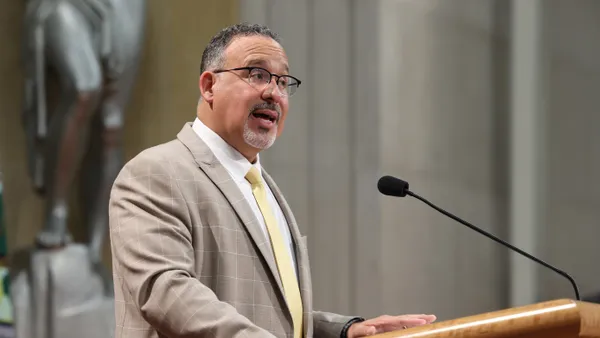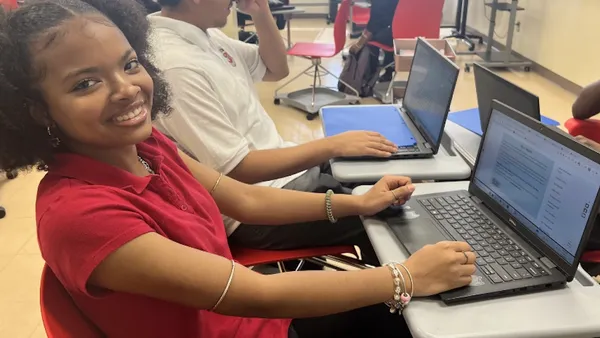In 2017, nearly 40% of students enrolled in the fall quarter in degree-granting postsecondary institutions were over 25 years old – a large percentage for a group that is often times overlooked in the discussion of how higher education should be reformed to fit the needs of students. We cannot fix our higher education system until we address what this segment really needs – flexible, affordable education options that are relevant for employers today.
Many adult learners pursue higher education to help achieve economic mobility for themselves and their families, and do so despite having other responsibilities like caregiving, community involvement and full-time employment. Many adult learners have already put in the time to earn real world experiences that are highly relevant to their education and career goals. For these working students, the flexibility around what they learn, how they learn and the pace at which they learn, will be critical to helping them achieve economic mobility. Allowing these learners to use their work experience to help them progress through their coursework at a faster pace, requires a model that regulators invest more resources in, especially as the landscape – and demographic – of higher education evolves.
Competency Based Education and Direct Assessment
One learning model that emphasizes real-world experience and application is competency-based education (CBE). CBE models range from traditional programs that incorporate competency-based learning but are still measuring progress by clock time and credit hours, to those that are building entirely new instructional models that are not tied to credit hours. This approach to supporting the professional skills development helps to promote economic mobility of adult learners, and serves as a powerful way to upskill and reskill an employer's workforce.
Today, approximately 600 colleges and universities offer some form of CBE and only a handful offer direct assessment—a more progressive type of CBE which separates learning from the arbitrary time constraints of seat time. Competency-based, direct assessment programs measure learning through demonstrated mastery – or assessment – of competency, rather than credit hours. This gives students far more flexibility of when they learn and at what pace they complete their degree program.
By shifting to a demonstrated learning and achievement model of education, rather than credit hours, learners can move at their own pace and use previous real-world experience to help gain new but related competencies. For example, a nurse who is pursuing a DNP may be able to demonstrate competency in one of her courses faster because the course content relates to some of her professional experience.
Direct assessment programs can be incredibly beneficial to adult learners looking for an affordable, flexible option for obtaining their degree. For example, Capella FlexPath learners were charged less and borrowed less than their equivalent counterparts, in the Capella programs tied to the credit hour. These cost savings demonstrate the power of the mastery model of education to help create more affordable options for working adults, and a pathway toward economic mobility.
But it is not easy for institutions to implement direct assessment programs. The existing federal financial aid program is built around the credit hour and an assumption of time-based learning. Many higher education institutions are also lacking the data infrastructure, technology and modeling needed to develop policies that are based on measured outcomes and program results. For higher education to evolve beyond traditional models of learning, and begin to benefit more types of students, institutions must think outside the box.
What We've Learned
Capella is among a handful of institutions currently authorized to operate direct assessment programs. Our FlexPath competency-based, direct assessment program allows students to move through coursework. In some cases students move at their own pace after they've demonstrated a set of required competencies. The FlexPath program is designed to promote increased return on student investment by creating pathways for decreasing tuition costs.
Outcomes from the first five years (Oct. 2013 - Dec. 2018) of FlexPath found that, in the aggregate, learners enrolled in the program:
- Have a higher two-year persistence rate than their peers in Capella's traditional programs.
- Progress more quickly through bachelor's and master's degree programs, compared to similar students in Capella's equivalent credit-hour programs.
- Are charged less in tuition and borrow less than students in Capella's equivalent credit-hour programs.
Benefits of Competency-Based, Direct Assessment Programs
By untethering students from the credit hour, direct assessment gives learners who juggle multiple priorities the opportunity to complete the competencies with which they are more familiar at a faster pace. They are also able to take more time with concepts that are less familiar. Importantly, this model allows adult learners seeking a career change or advancement to fit education into their lives in a way that is realistic and achievable. In a new economy in which one degree or one set of competencies may not be enough to last a career, solving the puzzle of how to support continual learning is critical. CBE and direct assessment may be key.
It's imagined that most adult learners want to advance their careers and economic standing without breaking the bank. Similarly employers who encourage the development of new competencies by offering tuition assistance benefits, might do so to help maintain a professionally relevant workforce. Marrying the two concepts can help result in a win for all.
Adult learners need the flexibility to accelerate their learning by working at their own pace and applying valuable, real-world experience. Programs that ease the cost burden of higher ed and assist with educational return on investment will continue to appeal students.










